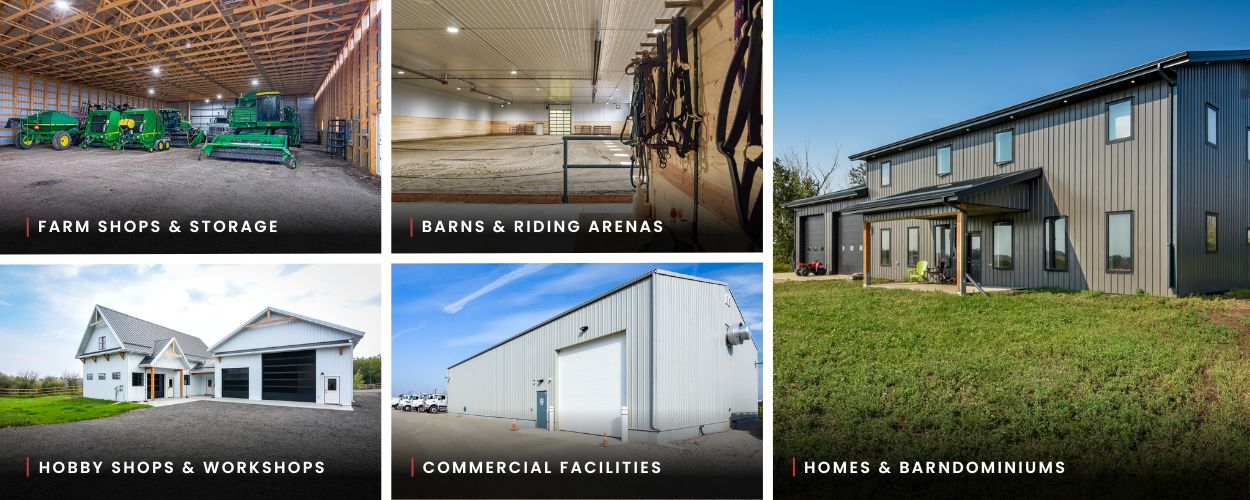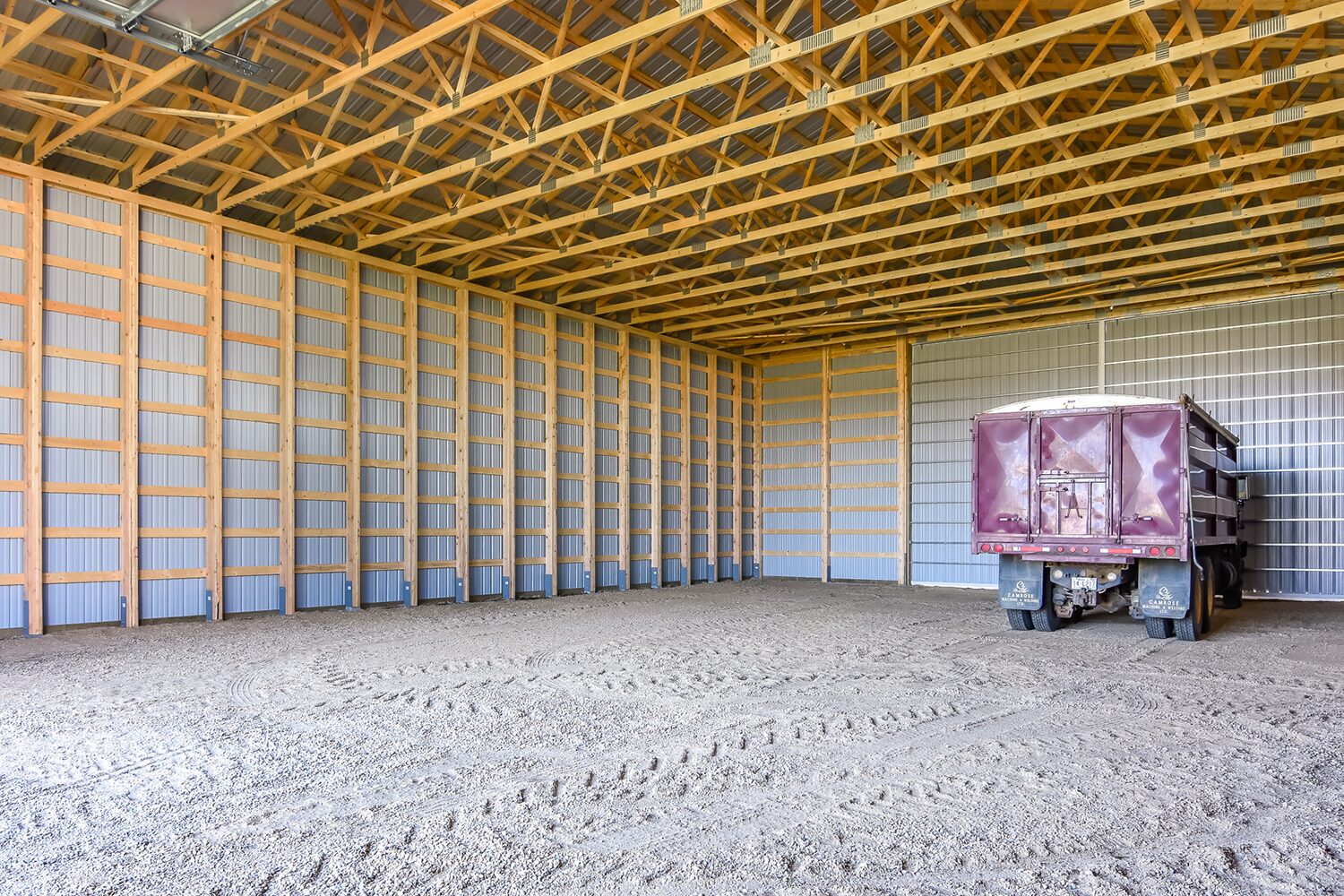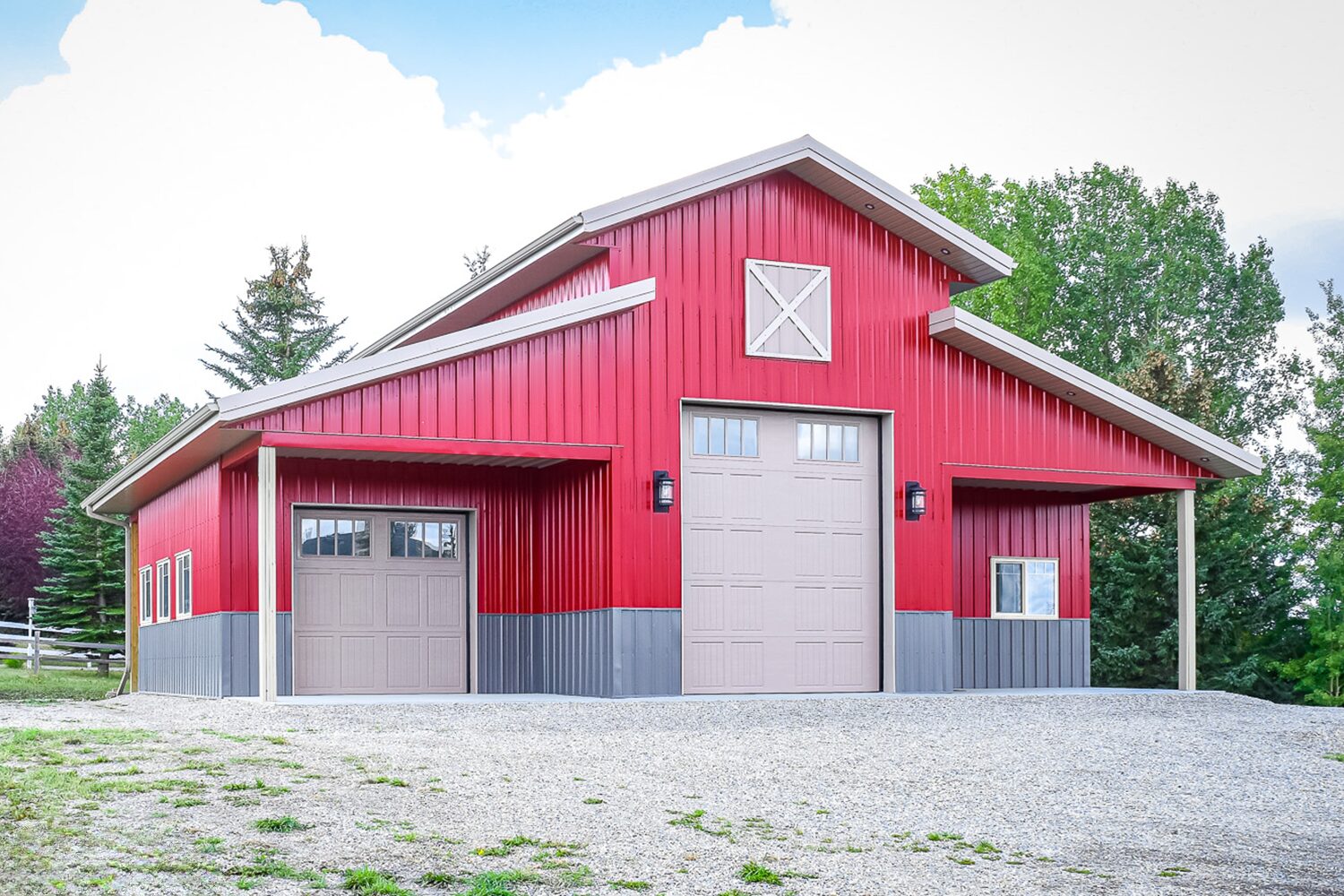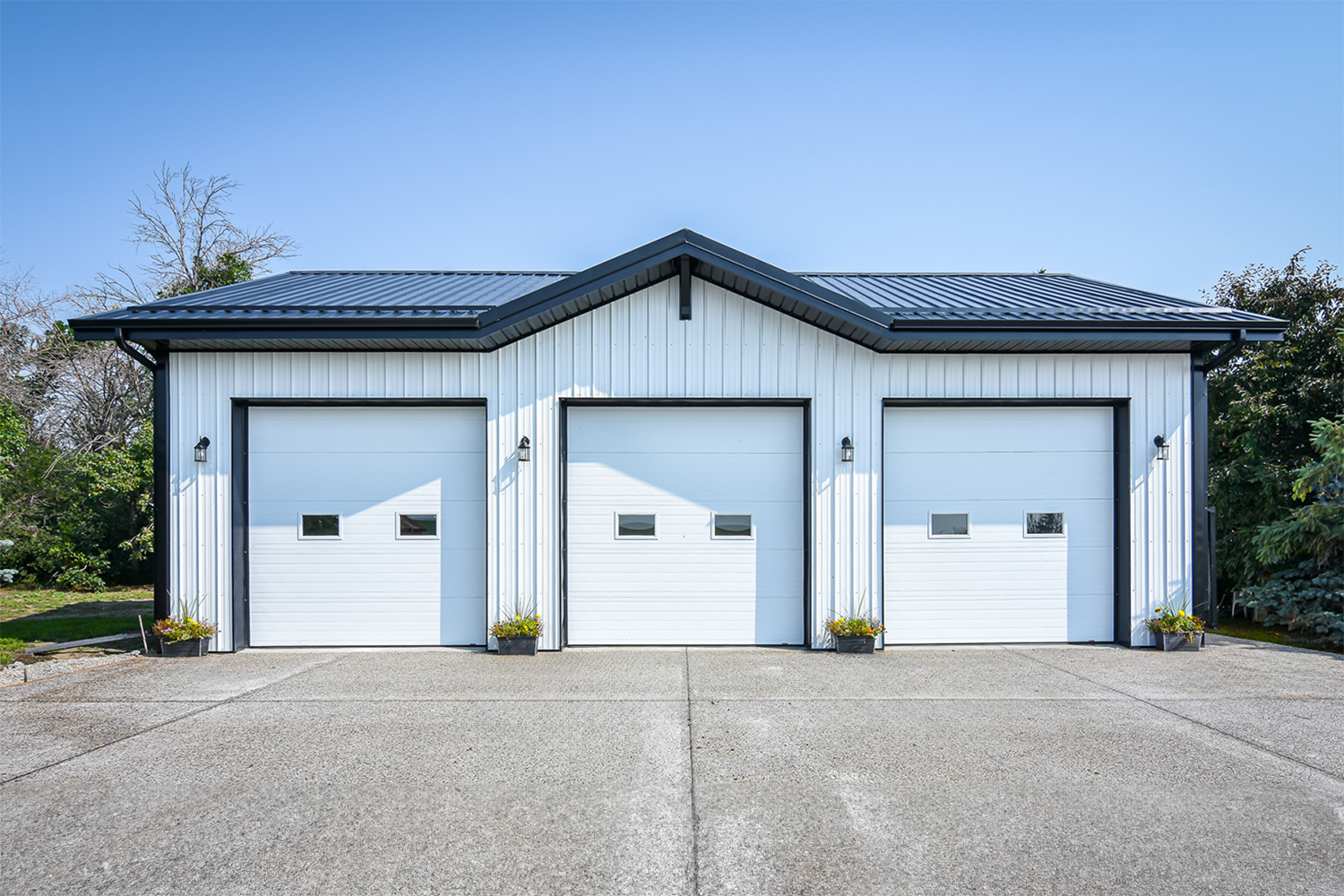When planning a new outbuilding or residence for their farm or acreage, many rural property owners ask: what is a post frame building? The first step in purchasing a building is understanding the construction methods available to you. In this article, we’ll breakdown what makes a post frame building and their most common applications.
What is a Post Frame Building?

A post frame building is constructed with a structural system that uses large wood posts spaced several feet apart and anchored deep within the ground to support the entire building and provide strength to stand against snow and wind loads. Each adjacent set of vertical posts typically bears the full weight of a roof truss, creating structures with large, clear-span interiors.
Since the large vertical posts in post frame buildings are set below grade, another notable characteristic of these structures is that they don’t have a poured concrete foundation, which are traditionally found in more conventional construction methods.
The shell of post frame structures are constructed using just a few building components, the main ones are:
- Posts: the vertical ‘columns’ that are set in the ground
- Trusses: wooden trusses bearing on a set of posts
- Strapping/Purlins: horizontal wooden members that connect the posts to each other and the trusses together
- Metal Cladding: fastened to the strapping and purlins, the metal seals the building from the elements
What Are Common Applications of Post Frame Buildings?

Post frame buildings have deep roots in the agricultural world, having been used as barns or storage buildings on farms for over a century. Today, however, post frame construction is a popular choice for rural buildings of all types and are commonly used for:
- Agricultural Buildings: Farm shops, machine sheds, calving barns, and hay storage
- Acreage Buildings: Garages, workshops, and hobby shops
- Equestrian Buildings: Riding arenas and horse barns
- Commercial Buildings: Offices, warehouses, retail spaces, and workshops
- Residential Buildings: Barndominiums (shop homes) and bungalows



